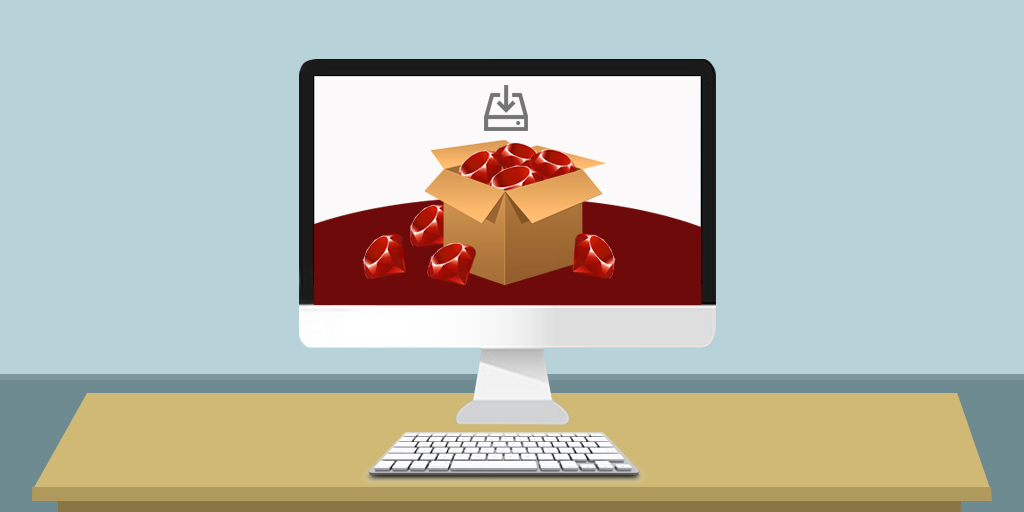Now that we have Homebrew installed, we can use it to install Ruby. We're going to use rbenv to install and manage our Ruby versions. To do this, run the following commands in your Terminal: brew install rbenv ruby-build # Add rbenv to bash so that it loads every time you open a terminal echo 'if which rbenv /dev/null; then eval '$ (rbenv. Just download it, run it, and you are done! If you are installing Ruby in order to use Ruby on Rails, you can use the following installer: Bitnami Ruby Stack provides a complete development environment for Rails. It supports macOS, Linux, Windows, virtual machines, and cloud images. Many Rubyists use Ruby managers to. Free download Dark Cases: The Blood Ruby Dark Cases: The Blood Ruby for Mac OS X. Dark Cases: The Blood Ruby is an adventure hidden object game. The following instructions for installing Ruby have been tested on Mac OS X Yosemite (10.10.4). They should work fine with Mac OS X El Capitan (10.11.1) or Mavericks (10.9.5) as long as you’re running the latest updates for that version of Mac OS X. If you can help or wish to become one of the maintainers - just start helping. You can find more RVM related projects at RVM Github organization.
We recommend Ruby 2.2 or newer for use with Rails. Rails requires Ruby 1.9.3 or newer.
Source: Compile it yourself
Windows installer: Ruby, popular extensions, editor
OS X 10.5+: Included with developer tools
(then do gem update rails)
We recommend managing your Ruby installation through rbenv. It’s an easy way to run multiple versions for different applications and update when a new release is made.
With Ruby installed, you can install all of Rails and its dependencies through RubyGems on the command line:
Ruby Editor Mac
New versions of Rails can be installed the same way.
Ruby For Mac Download Full

Create your application skeleton and start the server:
You’re running Ruby on Rails! Follow the instructions on http://localhost:3000.

TextMate on OS X has long been the favored Rails editor, but the classic editors are still going strong. See VIM for Rails and Emacs for Rails. For a full-on IDE, check out JetBrains RubyMine.
Which version to download?
If you don’t know what version to install and you’re getting started with Ruby, we recommend that you use the Ruby+Devkit 2.7.X (x64) installer.It provides the biggest number of compatible gems and installs the MSYS2 Devkit alongside Ruby, so gems with C-extensions can be compiled immediately.The 32 bit (x86) version is recommended only if custom 32 bit native DLLs or COM objects have to be used.
How to update?
Ruby can be updated to the latest patch version (e.g. from 2.6.1 to 2.6.4) by running the new installer version.Installed gems are not overwritten and will work with the new version without re-installation.It’s sufficient to use the RubyInstaller without Devkit for these update installations.The Devkit can be updated separately using the ridk install command.
If the new Ruby version is from a different stable branch, then please use a new target directory for installation.That is to say, a previous RubyInstaller-2.6.x installation should not be updated by installing RubyInstaller-2.7.x into the same directory.This is because gems with C extensions are not compatible between ruby-2.6 and 2.7.Find out more in the FAQ.
RubyInstaller-head
RubyInstaller-head is a daily-updated version of the Ruby development branch.It can be used for continuous integration tests (CI) on your gems or applications, so you’re prepared for upcoming changes to the Ruby core.Builds are available on stable download URIs in the github release section.They can be easily integrated into Github Actions or Appveyor.
With Development Kit?
RubyInstaller uses the MSYS2 toolchain as its development kit.It is bundled into the Ruby+Devkit installer version as a selectable component, so that no additional downloads/installs are required.It’s possible to share one Devkit among multiple versions of Ruby.
MSYS2 is required in order to build native C/C++ extensions for Ruby and is necessary for Ruby on Rails.Moreover it allows the download and usage of hundreds of Open Source libraries which Ruby gems often depend on.
The MSYS2 development environment can be activated in a running cmd or powershell console by ridk enable.This adds commands like make, gcc, pacman or sh to the search path.See more in the Wiki.
Speed and Convenience
RubyInstaller is compiled with the latest GCC at the release date.The installed Ruby is a native Windows application but combines this with the rich UNIX toolset of MSYS2 and the large repository of MINGW libraries.
Read more about RubyInstaller and its alternatives here.
Mac Install Ruby Dev


Documentation
The Ruby core- and standard library documentation are included as part of the installation.We also recommend the online documentation, or the HTML version downloadable from ruby-doc.org.
Ruby Mac Apple
Support
Enjoy! Happy Ruby-coding! And let us know what you think, or if you have any issues, at our helpful and friendlyRubyInstaller Google Group.